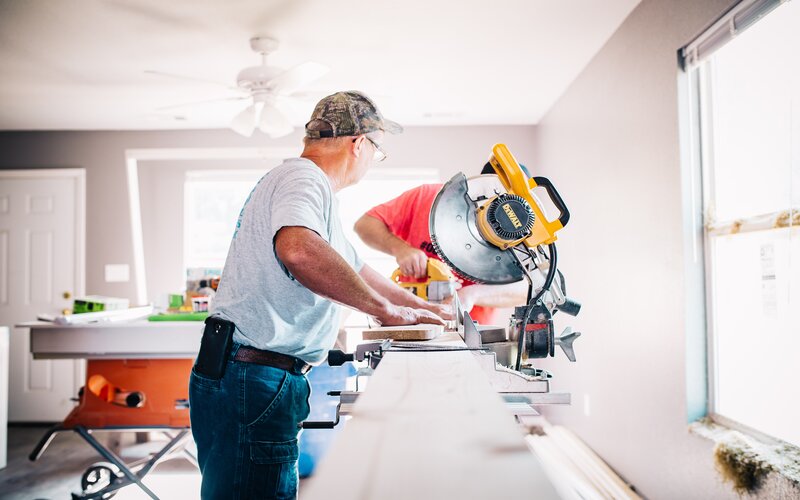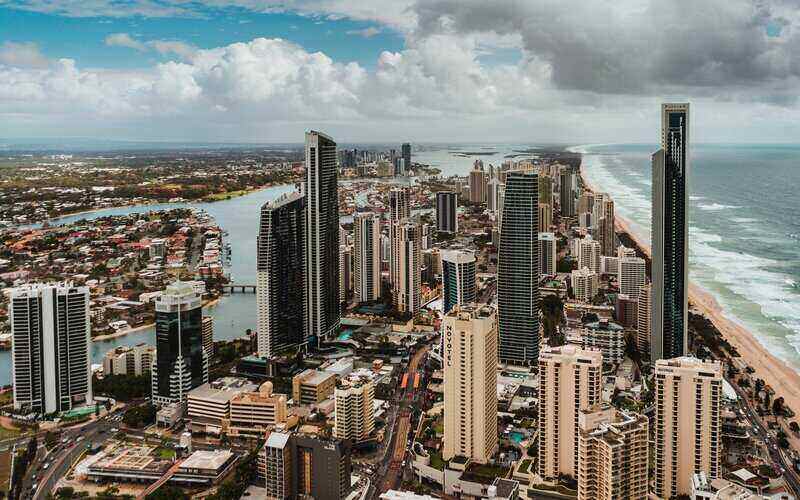By all measures, the cost of building a new home in Australia has skyrocketed. Official figures, released by the Australian Bureau of Statistics, found the average cost of a newbuild increased 29% in the five years since the pandemic, although other calculations put it much higher.
There's no doubt having the skills and confidence to build your own home can mean significant savings on labour and materials, while also placing you in full control over the finished product.
But there are a few boxes you'll need to tick first, and you'll likely need to get your finances in order before you start. That's where construction loans can help you see your project through to completion. But first…
What is an owner-builder?
Before we get too far, let's be clear on what an owner-builder is. You're considered an owner-builder if you undertake a construction or renovation project on your own land without engaging a licensed builder to carry out the work.
That means you're in charge of supervising the project, coordinating the contractors, ensuring all the safety, legal, and compliance boxes are ticked, and putting in place the necessary insurance coverage for the project.
In most Australian states, owner-builders working on projects valued over a certain threshold (as low as $10,000 in some jurisdictions) need to have an owner-builder permit. These are often conditional on completing an approved owner-builder course. In many states, owner-builders also need to hold a 'white card', a mandatory certification for construction workers showing they have completed a recognised training course on workplace health and safety.
Many states and territories may also place restrictions on the types of projects owner-builders can undertake so you'll need to check the type of home you want to build will comply.
So, from the outset, there is a bit more involved in being an owner-builder than just having the right tools.
What is an owner-builder construction loan?
Owner-builder construction loans are specifically tailored for people seeking to build their own home or renovate an existing dwelling. These types of loans differ from traditional mortgages as instead of receiving the loan amount all at once, the lender releases the loan in stages according to progress on your project.
One significant advantage over a traditional home loan is you make interest-only (IO) repayments on the money you've accessed. This will generally be the case during the build period before the loan reverts to a principal and interest (P&I) repayment schedule post-construction.
As a rule of thumb, Australian lenders can be conservative when it comes to providing home loans to owner-builders. This is because of the extra risk associated with lending on a home that hasn't been constructed yet.
With a traditional home loan, if there is a default, the lender is able to repossess the property and sell it in a bid to recoup its debt. But with a construction loan, a partly built home is a far more difficult to sell. That's one reason construction loans tend to have considerably higher interest rates.
When you're ready to research what loan will be the best for your circumstances, the table below features some of the most competitive construction loans on the market.
Lender Home Loan Interest Rate Comparison Rate* Monthly Repayment Repayment type Rate Type Offset Redraw Ongoing Fees Upfront Fees Max LVR Lump Sum Repayment Extra Repayments Split Loan Option Tags Features Link Compare Promoted Product Disclosure
Promoted
Disclosure
Construction loan stages
When you sign up to an owner-builder construction loan, your lender will want to assess each stage of the construction project before releasing any funds for the next stage. These payments are also referred to as loan 'drawdowns'.
Typically, building a house has a number of construction stages including:
-
Preparation - includes plans, permits, connection fees, insurance
-
Base - includes concrete slab, footings, pad and base brickwork
-
Frame - the house frame is complete and approved
-
Lock-up - the windows and doors, roofing, exterior and insulation are completed
-
Fixing - kitchen cupboards, appliances, bathroom, and toilet installed. Plumbing and electrics is completed. The home is plastered and painted.
-
Completion - fences are up and the site tidied. Builders or tradespeople should receive their final payments.
Generally, funds are released at agreed stages of the construction project. Lenders will send a valuer to check the work has been done to a suitable standard before releasing the next payment.
Work you cannot complete as an owner-builder
Even if you've got your owner-builder permit, it's important to note there is some specialist work that you are not permitted to do yourself, unless of course you hold the relevant occupational licence. This includes:
-
Occupational work such as electrical work, plumbing, draining, gas-fitting, or pest control
-
Fire protection or mechanical services work in excess of $1,100
-
Building commercial or industrial buildings (e.g. shops, industrial sheds, farm buildings)
-
Removal of more than 10 square metres of asbestos
-
Building or renovating multiple dwellings (e.g. duplexes, attached granny flat, block of units)
-
Carrying out any work not stated in your permit conditions
You'll need to check the regulations for your state or territory to ensure you're obeying regulations.
What could possibly go wrong?
Managing a project within a budget is a complex and long-term task - just watch any episode of 'Grand Designs'. But if you have the necessary experience and, ultimately, the time to complete the job, owner-builder loans can be a handy way to access finance and leverage.
— No Context Grand Designs (@ukgranddesigns) November 24, 2021
Obtaining an owner builder construction loan
Gaining approval for an owner-builder construction loan is generally more difficult than for a standard home loan - and frequently involves considerably more paperwork. This is because in addition to assessing your suitability as a borrower, the lender also has to assess the risks involved with financing the dwelling you're proposing to build.
Lenders will typically ask to see:
-
Specific documented information such as council plans and permits for the construction
-
Your progressive payment schedule (if you plan to do the work yourself)
-
A fixed-price contract (if you are working in tandem with a registered builder)
-
Your insurance provisions
-
Contingencies if plans fail or run behind schedule
This is on top of the usual paperwork that comes with home loans including identity verification, income details, existing assets and liabilities, monthly bills, and financial habits.
Given there is much involved in applying for an owner-builder construction loan, it pays to have all your ducks in order before you dive into the market.
What insurance will I need before I receive approval?
All lenders will require you to have adequate insurance to cover you as an owner-builder in the event anything goes wrong during the construction period.
The exact insurance you'll be required to take out varies from lender to lender, but the most common types of insurance are:
-
Builder's All Risk insurance (also known as Construction or Contract Works insurance): This covers any damage to the site or property that occurs during the build, including theft of materials and vandalism. It also protects you in case of natural disaster, such as when bushfire or cyclone destroys your partially built home.
-
Domestic/Home Warranty: If you are using another registered builder rather than building everything yourself, this insurance protects you if your builder doesn't complete the project owing to the builder's death, insolvency, or disappearance. It also covers you for serious structural defects due to builder negligence and for legal fees which may be incurred if a court case results.
-
Public Liability: As you're responsible for everything that happens on your building site, you will need public liability insurance to protect you if workers are injured during construction, or if your neighbours' properties are damaged during the building process.
-
Personal Accident/Injury: This should cover you and your family if anyone is injured on the building site. Some personal accident insurance contracts specify that anyone on the site must wear personal protection equipment, so check what the requirements are in your policy and make sure you adhere to them.
Pros and cons of owner-builder construction loans
Pros
-
Finance tailored to your project: The release of funds should align with the stages of the project. Due to the set-up of owner-builder construction loans, the loan ensures that any builders and/or contractors are being paid for completed work, not for work that is yet to be completed.
-
Save on interest: As you are only charged interest on the loan amount used per stage, this can ease cost burdens while your home is being built.
-
First home buyer benefits: Constructing your own home can be a good option for first home buyers, with access to first home buyer grants and stamp duty exemptions or concessions when land is purchased, before the house is even built.
See also: First Home Buyer Loans & Grants
See also: State and territory stamp duty exemptions
-
You get to see your home unfold and have control over build quality, contractors, time frames, and materials used.
Cons
-
More complex: There is likely to be considerable paperwork and a few hurdles you may face in securing your loan. Approval for a construction loan involves a significant amount of work beforehand and you'll need to provide extra documentation in the application process.
-
May need larger deposit: Some lenders might require a bigger deposit for owner-builder construction loans (although this will depend on the lender).
-
Higher interest rates: The interest rates for owner-builder construction loans are generally higher than those for regular home loans as the lender will be taking on more risk lending for a home that is not yet built and, therefore, very difficult to value.
-
Potential cost overruns: Even the best-planned building projects can see construction costs blow out. Some lenders may be willing to lend more than the loan amount agreed to depending on the circumstances, but you will need to have contingency plans if you have to cover the extra costs yourself.
Savings.com.au's two cents
Before you take on the task of building your own home, you need to think carefully about whether you have the skills and experience required to undertake - and complete - the task.
While there may be cost savings, you also need to consider the time commitment required in building your own place. Even if you do have the necessary construction skills, there will be a significant time investment in project coordination, managing budgets, and handling unexpected issues. You also may not be earning an income during the time you are working on your own project so that will need to be factored into your calculations.
That said, building a home, particularly if you are a first home buyer, can give you access to various grants and stamp duty exemptions or concessions that can also help ease cost pressures. It can also give you more control over the finished product.
Be sure to tick all the regulatory boxes before you apply for a loan then shop around for the best construction loan deal you can find. While interest rates are important, remember to also check terms and conditions attached to the loan which may allow for some extra flexibility if the project doesn't go entirely to plan.
Some lenders can be reluctant to fund owner-builder construction projects, particularly for first timers, so be prepared to do some legwork.
First published on February 2022
Image by Annie Gray via Unsplash.

Ready, Set, Buy!
Learn everything you need to know about buying property – from choosing the right property and home loan, to the purchasing process, tips to save money and more!
With bonus Q&A sheet and Crossword!







 Bea Garcia
Bea Garcia
 Denise Raward
Denise Raward
 Harry O'Sullivan
Harry O'Sullivan
 Brooke Cooper
Brooke Cooper
 Hanan Dervisevic
Hanan Dervisevic

